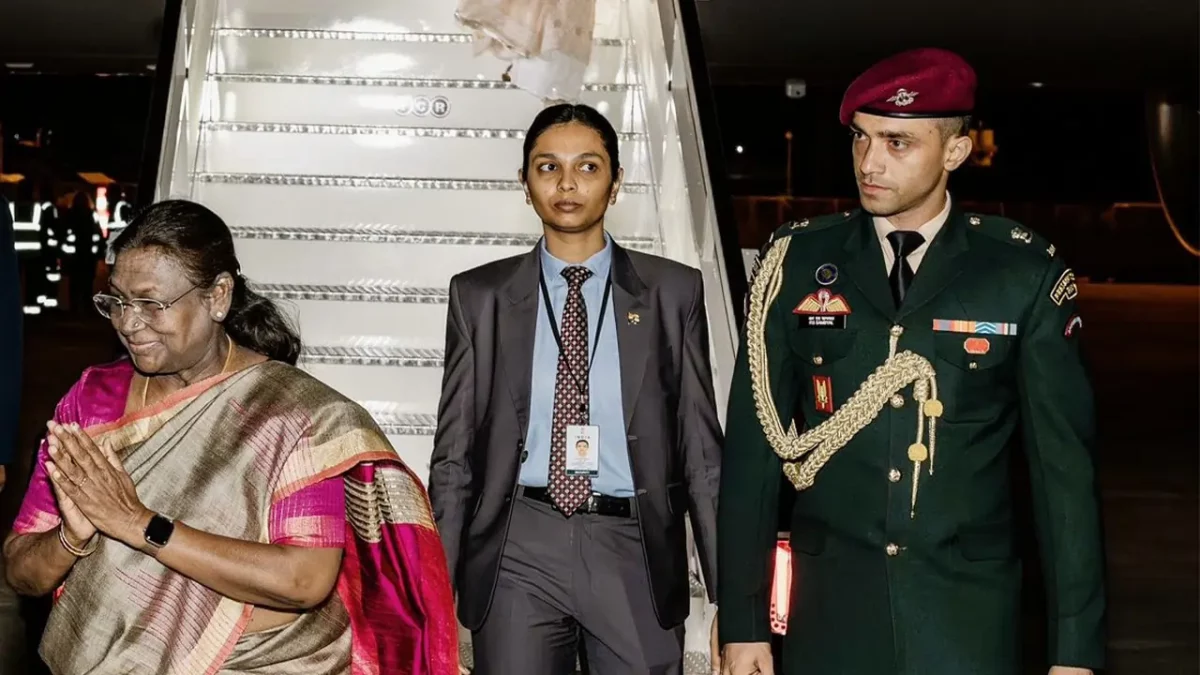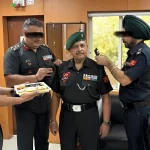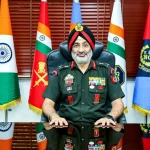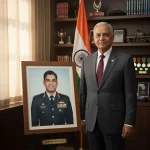In the Indian Armed Forces, the role of Aide-de-Camp (ADC) represents a unique intersection of military tradition, administrative efficiency, and national prestige. Dating back to colonial times, the position has evolved into a symbol of excellence for officers who support the country’s top leaders.
This comprehensive exploration delves into the definition, historical context, detailed responsibilities, selection mechanisms, training requirements, and broader implications of becoming an ADC, with a focus on its application within India’s tri-services framework the Army, Navy, and Air Force. Drawing from established protocols and recent developments, such as the appointment of the first female Navy ADC in 2025, this article provides an in-depth look at what it entails to hold this esteemed position.
Historical Context and Evolution in India
The concept of an Aide-de-Camp traces its roots to French military practices, where it literally meant “assistant in the field.” In India, it was formalized during British colonial rule and retained post-independence as a key element of the Armed Forces’ structure. Today, it serves not only functional purposes but also as a title of honor, with recipients using post-nominal letters like ADC even after their tenure.
The President of India, as the Supreme Commander, appoints ADCs to ensure seamless military-civilian coordination, reflecting the integrated defence system. Similarly, state Governors and senior generals benefit from this support, adapting the role to modern governance needs while preserving ceremonial aspects.
Historically, ADCs have been involved in pivotal moments, from independence ceremonies to contemporary diplomatic engagements. For example, the inclusion of an honorary ADC from the Territorial Army highlights inclusivity, allowing part-time reservists to contribute. In special cases, like in Jammu and Kashmir, both Governor ADCs come from the Army due to regional security considerations. This evolution underscores the role’s adaptability, balancing tradition with operational demands.
Detailed Roles and Responsibilities
ADCs are multifaceted officers, often described as the “right-hand” to their principals. Their duties can be categorized into administrative, ceremonial, and advisory functions:
- Administrative Tasks: Managing daily schedules, handling correspondence, and coordinating travel arrangements. This includes preparing itineraries for state visits and ensuring logistical support, such as vehicle and accommodation bookings. They also supervise household staff and manage emails or official communications, freeing up the principal for strategic decisions.
- Ceremonial and Protocol Duties: Ensuring adherence to military protocols during events like Republic Day parades, foreign dignitary receptions, or award ceremonies. ADCs often stand in formation, wearing the distinctive aiguillette on their uniform’s shoulder typically on the left for most, but protocol dictates variations. They act as liaisons with government departments, military units, and embassies.
- Security and Advisory Roles: Providing input on security arrangements and acting as a confidential advisor on military matters. In high-pressure scenarios, they maintain composure, offering quick briefings or representations when the principal is unavailable. For the President, this extends to national security discussions, where ADCs facilitate connections with service chiefs.
The workload is intense, often involving long hours and travel, but it provides unparalleled exposure to India’s political and diplomatic spheres. Service chiefs themselves have three ADCs each, while Major Generals and above commanding units typically have one, often from their own regiment.
Read: Meet Major Rishabh Singh Sambyal: 4 Para ‘Dagger’, President’s ADC and Viral Internet Sensation
Eligibility Criteria and Prerequisites
To qualify as an ADC, candidates must be commissioned officers with a proven track record. Key requirements include:
- Service Experience: A minimum of 5-7 years in the Armed Forces, ensuring maturity and expertise.
- Rank Levels: Army officers at Captain or Major; Navy at Lieutenant or Lieutenant Commander; Air Force at Flying Officer or Squadron Leader.
- Personal Qualities: Exceptional discipline, leadership, physical fitness, and communication skills, including fluency in English and at least one Indian language. A spotless record is non-negotiable, as the role involves sensitive information.
- Branch-Specific Entry: Army via NDA/CDS; Navy through NDA or direct entries like 10+2 B.Tech; Air Force via NDA/AFCAT.
Women officers are increasingly included, as seen with Lieutenant Commander Yashasvi Solanki’s 2025 appointment as the first female Navy ADC to President Droupadi Murmu. This reflects growing gender inclusivity in the forces.
The Selection Process: A Rigorous Journey
Selection is an internal, merit-based affair without public applications. It begins with nominations from unit commanders or service headquarters, focusing on performance appraisals. Shortlisted candidates face:
- Initial Screening: Review of service records for leadership and conduct.
- Evaluations: Mental aptitude tests, physical fitness assessments, and communication drills.
- Interviews: Personal sessions with senior panels, possibly including Rashtrapati Bhavan officials.
- Security Clearance: Thorough background checks, financial reviews, and interviews.
The process emphasizes holistic suitability, with final approvals from the President or relevant authority. Tenure is typically 2-3 years, during which personal life adjustments, like postponing marriage, may apply based on informal reports.
Training and On-the-Job Development
Post-selection, ADCs undergo specialized training in protocol, diplomacy, and administration, often at institutions like the Defence Services Staff College. This includes etiquette workshops, security protocols, and scenario-based simulations. On-the-job, they learn through immersion, adapting to the principal’s style while maintaining Armed Forces standards.
Notable ADCs and Career Impact
Prominent examples include officers who later rose to senior ranks, leveraging the exposure. Solanki’s appointment marks progress in women’s roles. Serving as an ADC often accelerates careers, providing networks and skills for future leadership.
Challenges and Broader Significance
While rewarding, the role involves high stress and constant availability. It symbolizes the Armed Forces’ role in governance, fostering unity across services. In a diverse nation like India, ADCs contribute to national integration through their inter-branch representation.
| Position | Number of ADCs | Composition | Typical Tenure |
|---|---|---|---|
| President of India | 5 (plus 1 honorary) | 3 Army, 1 Navy, 1 Air Force; Honorary from Territorial Army | 2-3 years |
| State Governors | 2 | 1 Armed Forces, 1 Police (Army only in J&K) | 2-3 years |
| Service Chiefs (Army/Navy/Air Force) | 3 each | From respective service | Variable, often 1-2 years |
| Major Generals and Above | 1 | From parent regiment/unit | Linked to command duration |
This table illustrates the structured allocation, ensuring balanced support across levels.
In conclusion, the ADC role embodies dedication to service, offering a pathway for officers to influence national affairs while upholding military values. Aspiring candidates should focus on excellence from day one in the forces.












